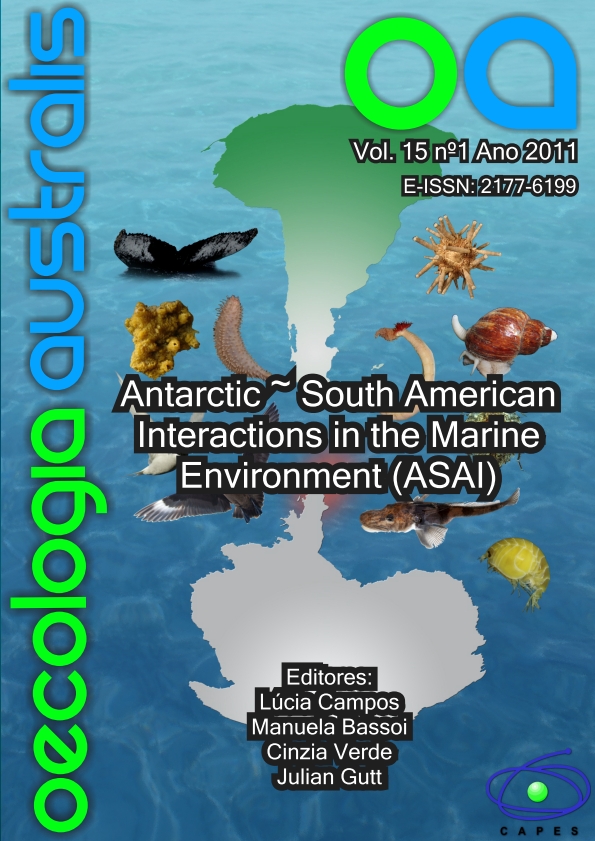ECHINODERMS AS CLUES TO ANTARCTIC ~ SOUTH AMERICAN CONNECTIVITY
Keywords:
echinoderms, biogeography, connectivity, Antarctica, South AmericaAbstract
table.MsoNormalTable { font-size: 10pt; font-family: "Arial","sans-serif"; }Isolation and climate change has lead to an Antarctic marine biota rich in endemic taxa. But evidence exists for the occurrence of several shared marine species between the Southern Ocean and other basins. This manuscript reviews on the echinoderm taxa known from the Antarctic and South America, and evaluates some evidences for the connectivity between these continents. Metadata from several studies and data from the Brazilian continental margin were used for the analyses. A total of 602 echinoderm species have been recorded so far at both regions, 82 of those (~14 %) are shared between Antarctica and South America, and from these around 46 % are typically deep-sea ones. A high species richness was found at the Antarctica Peninsula, South Shetland Is. and South Georgia, possibly resultant from highest sampling effort at these regions. Distinct geological history and the tectonic activities play an important role in regulating the benthic faunal assemblage of these regions. A overlap was found between the echinoderm fauna from the South American cone, and mainly the regions around the Antarctic Peninsula. The echinoderm fauna from the Brazilian margin distinguished from those at the tip of the continent, although a few shared taxa occurred. A species assemblage turnover was identified from the Uruguayan margin. Also, the whole Magellanic region showed more affinities with the Argentinean Atlantic margin and the Falkland/Malvinas Is. than the southern Pacific Chilean margin. South Georgia, as transition between the South American and Antarctic regions, shared species with both continents. The considerably low ratio between the number of shared and total species records from the Antarctic regions revealed that most species are most likely endemic to the Southern Ocean. But future explorations of the South American and Antarctic deep sea margins and basins could reveal a higher number of shared echinoderm species than that reported here. All these comparisons should be backed up by taxonomic calibration and use of molecular tools in order to distinguish cryptic species and evaluate genetic populations' structure, as these would lead to a better understanding of observed biogeographical patterns.


